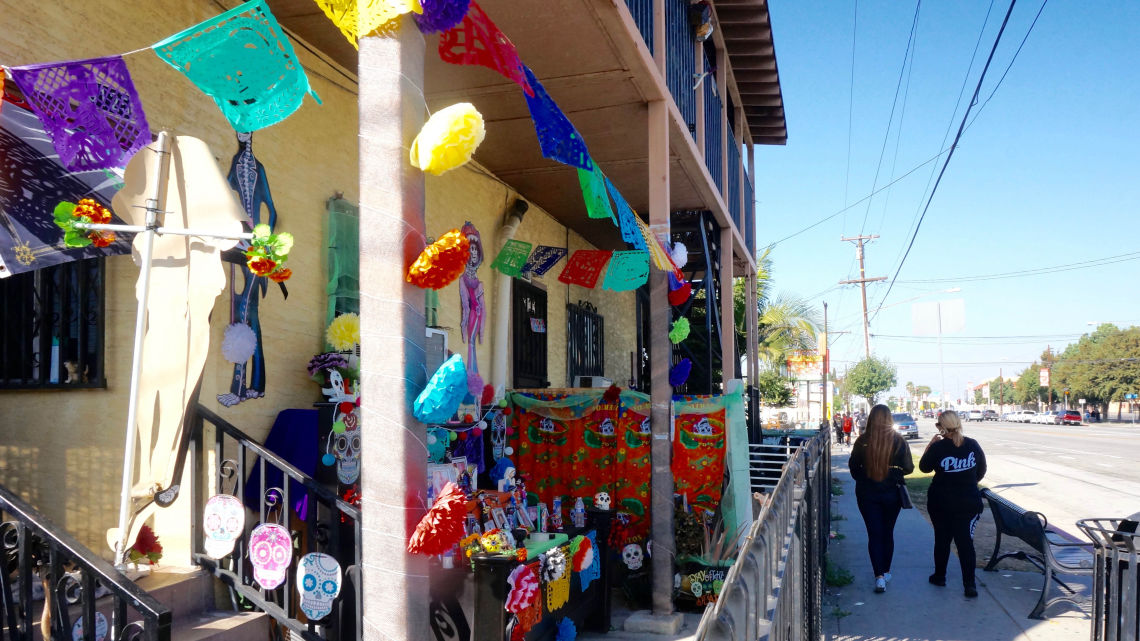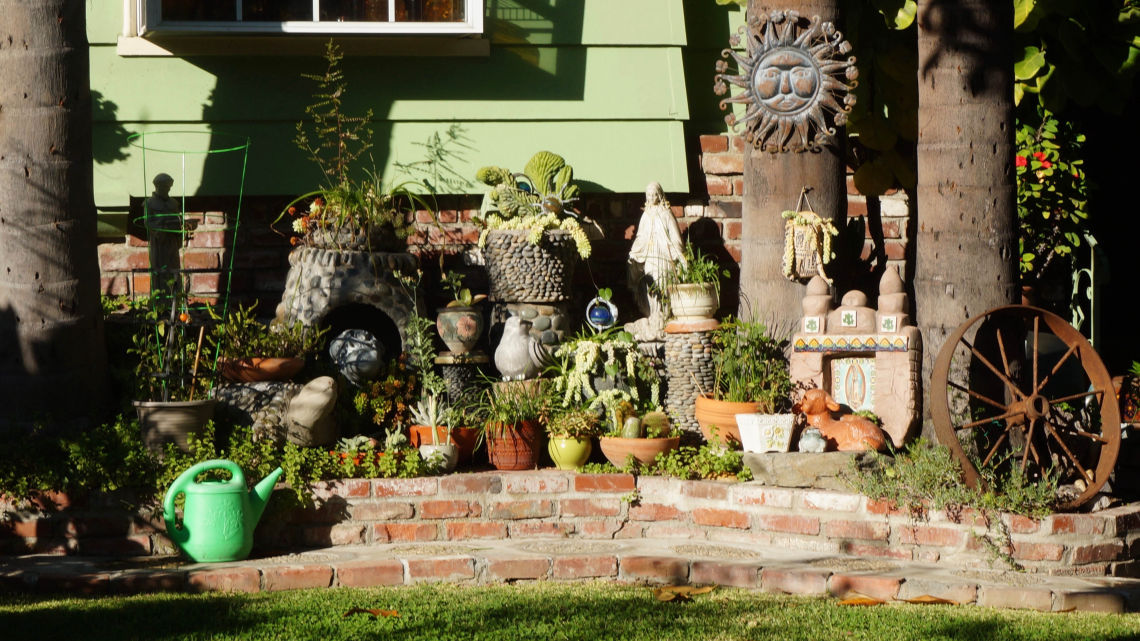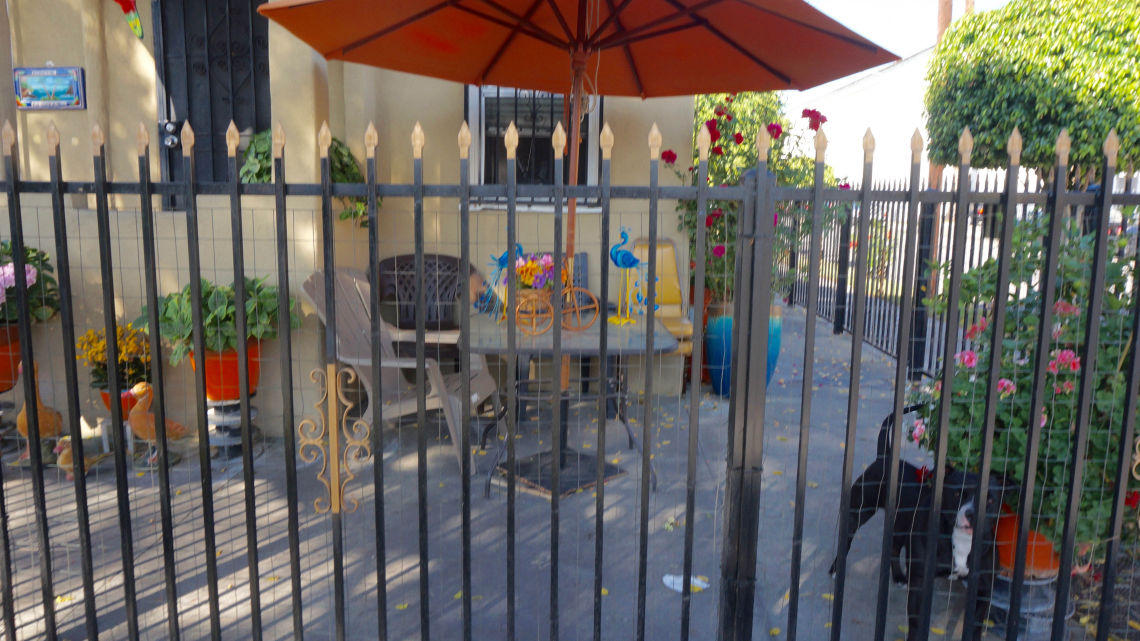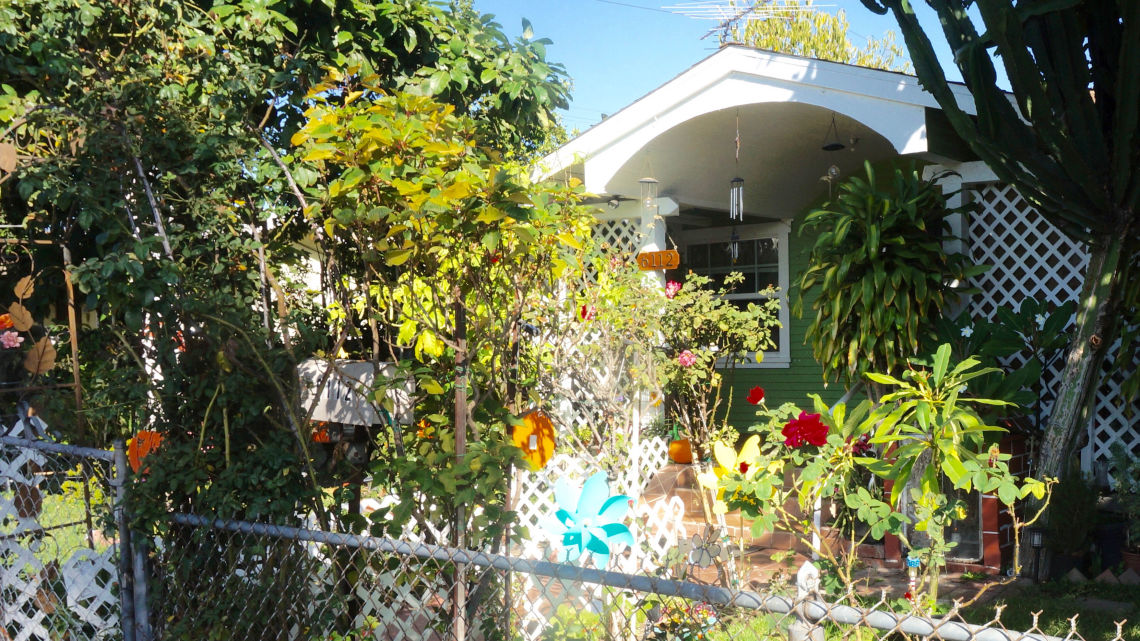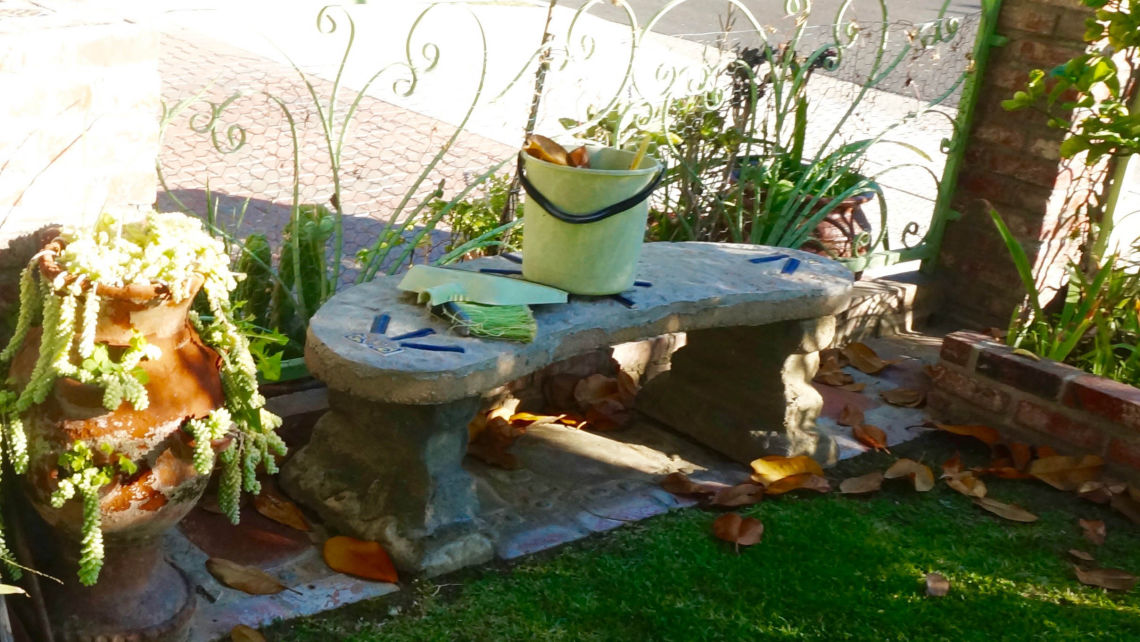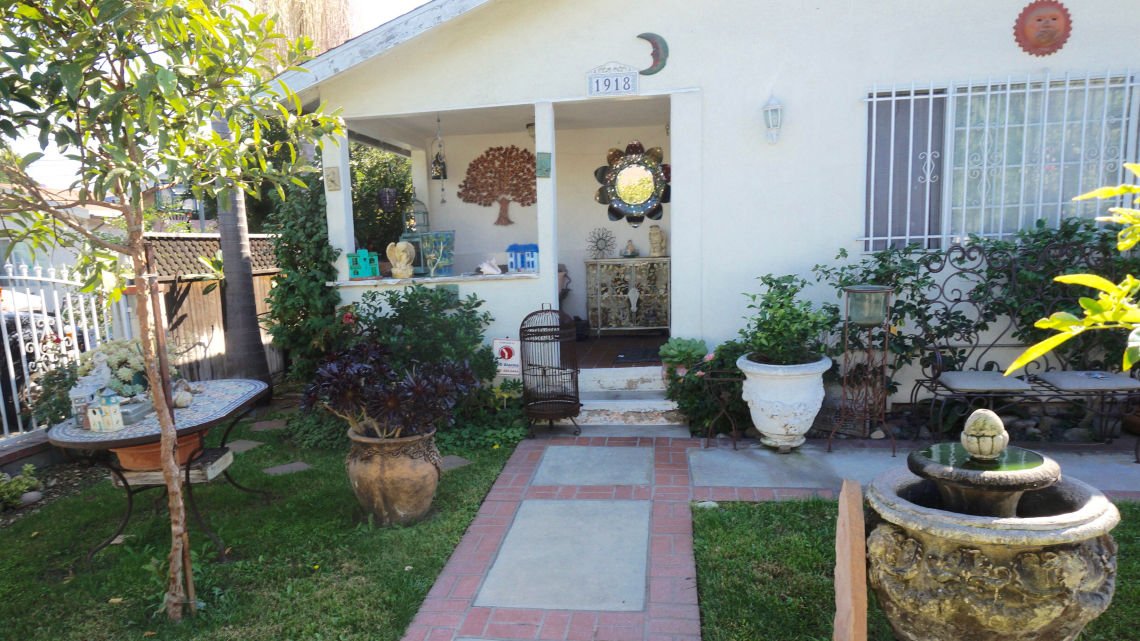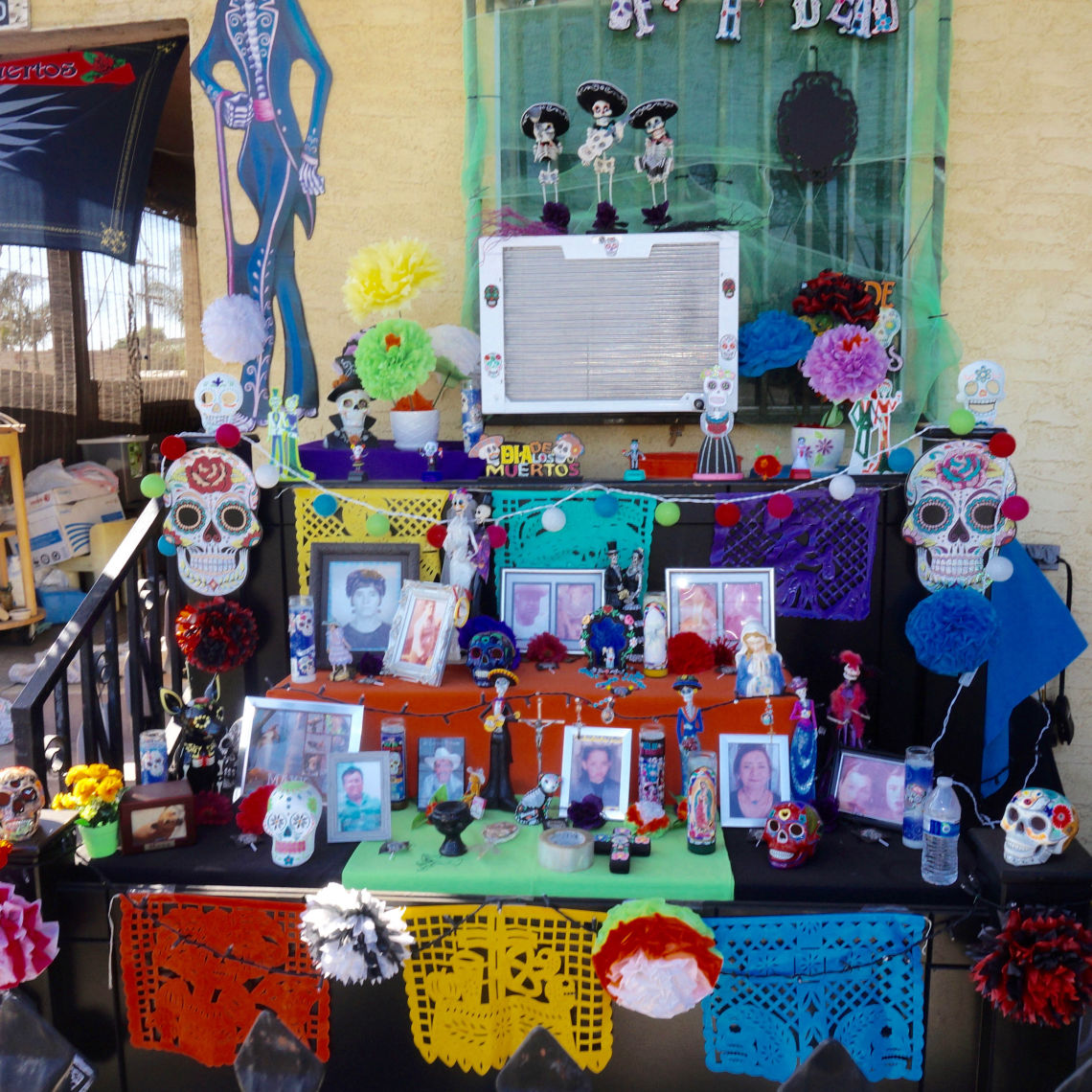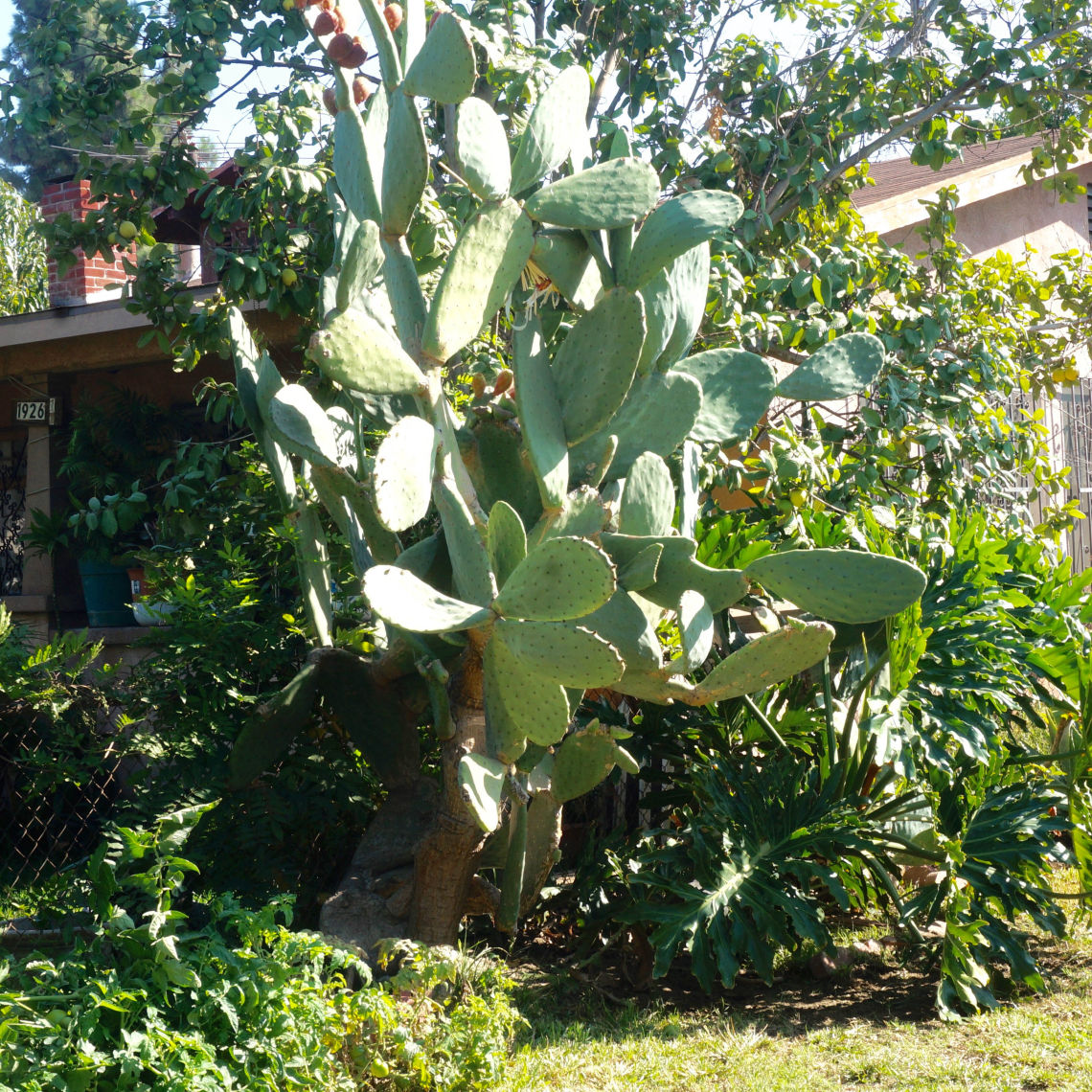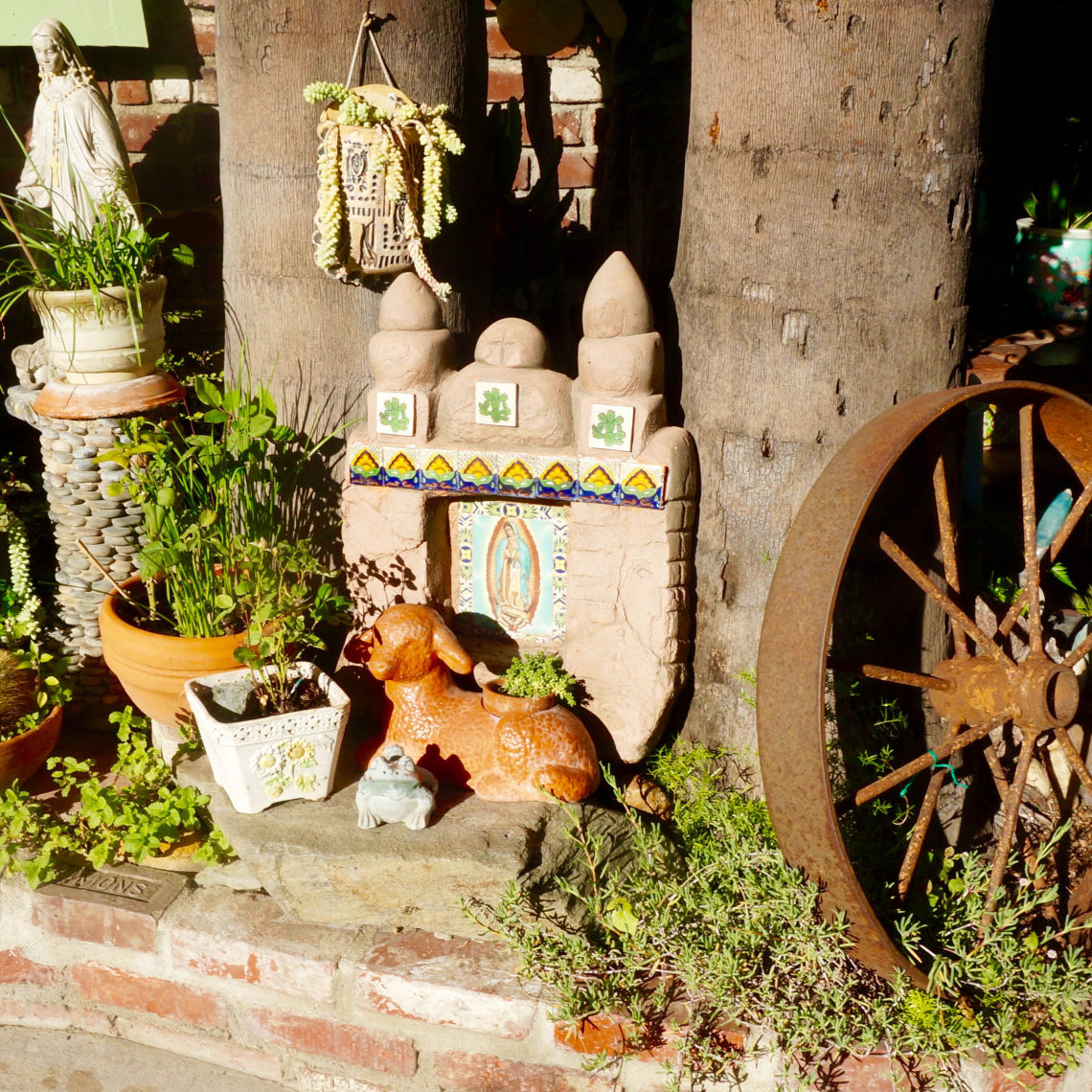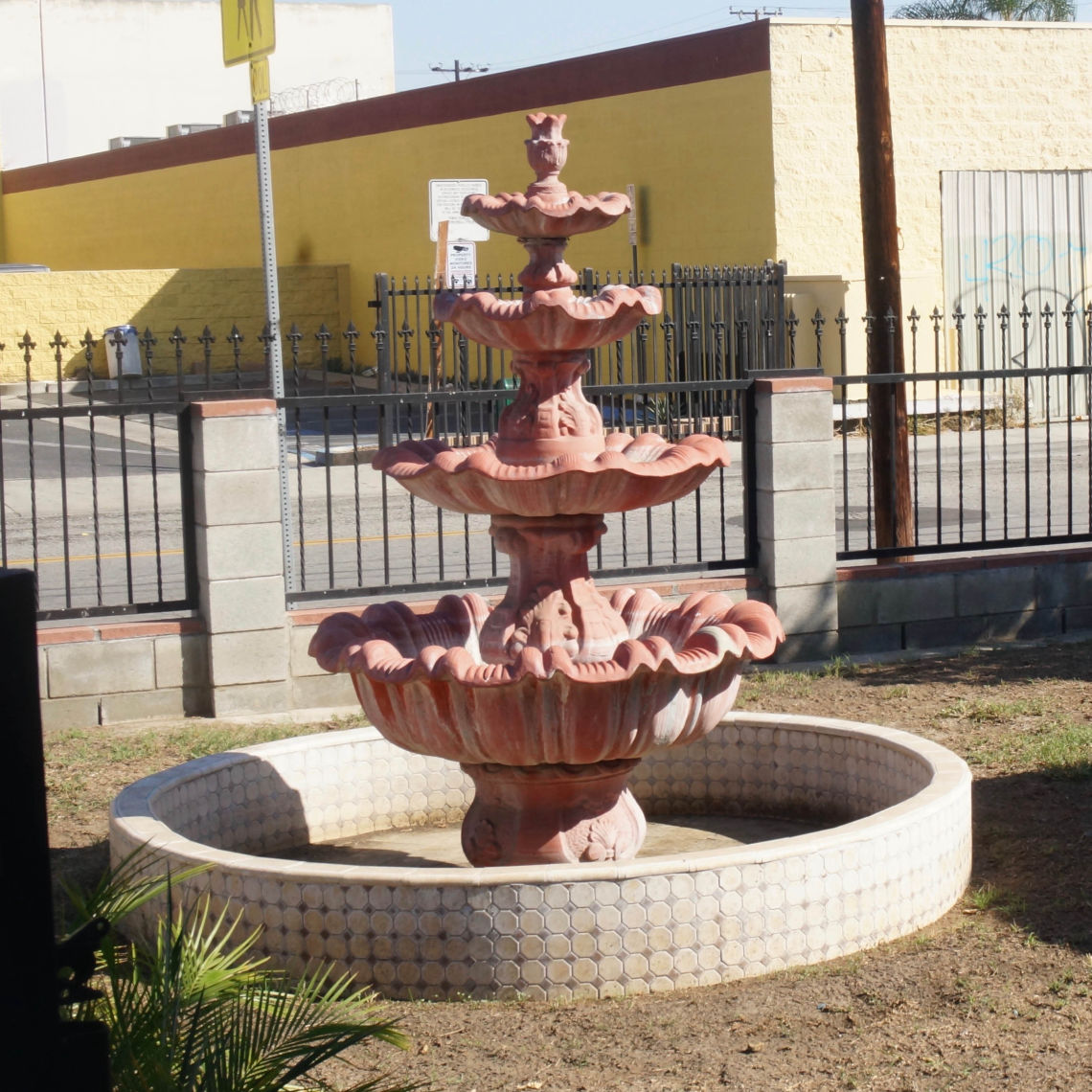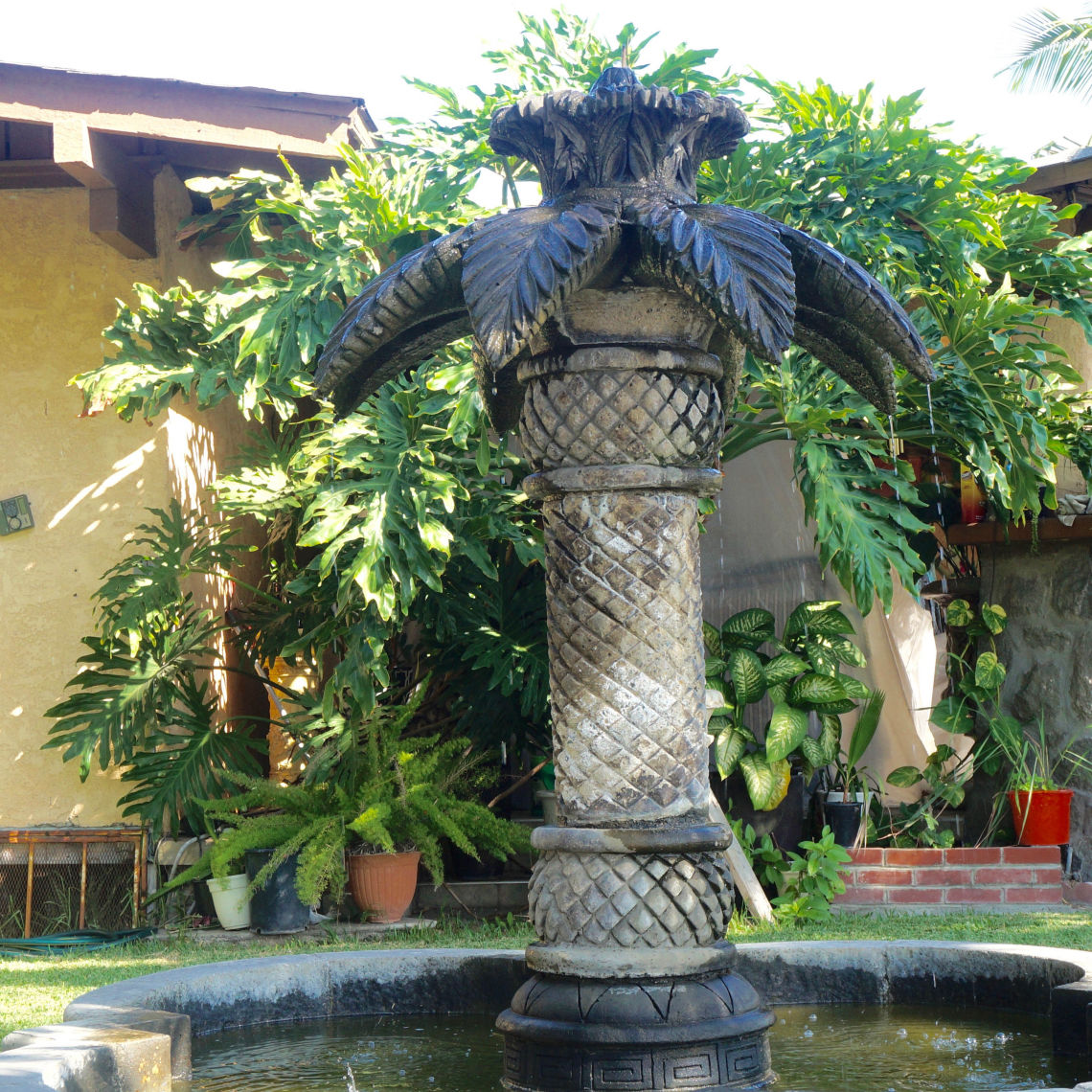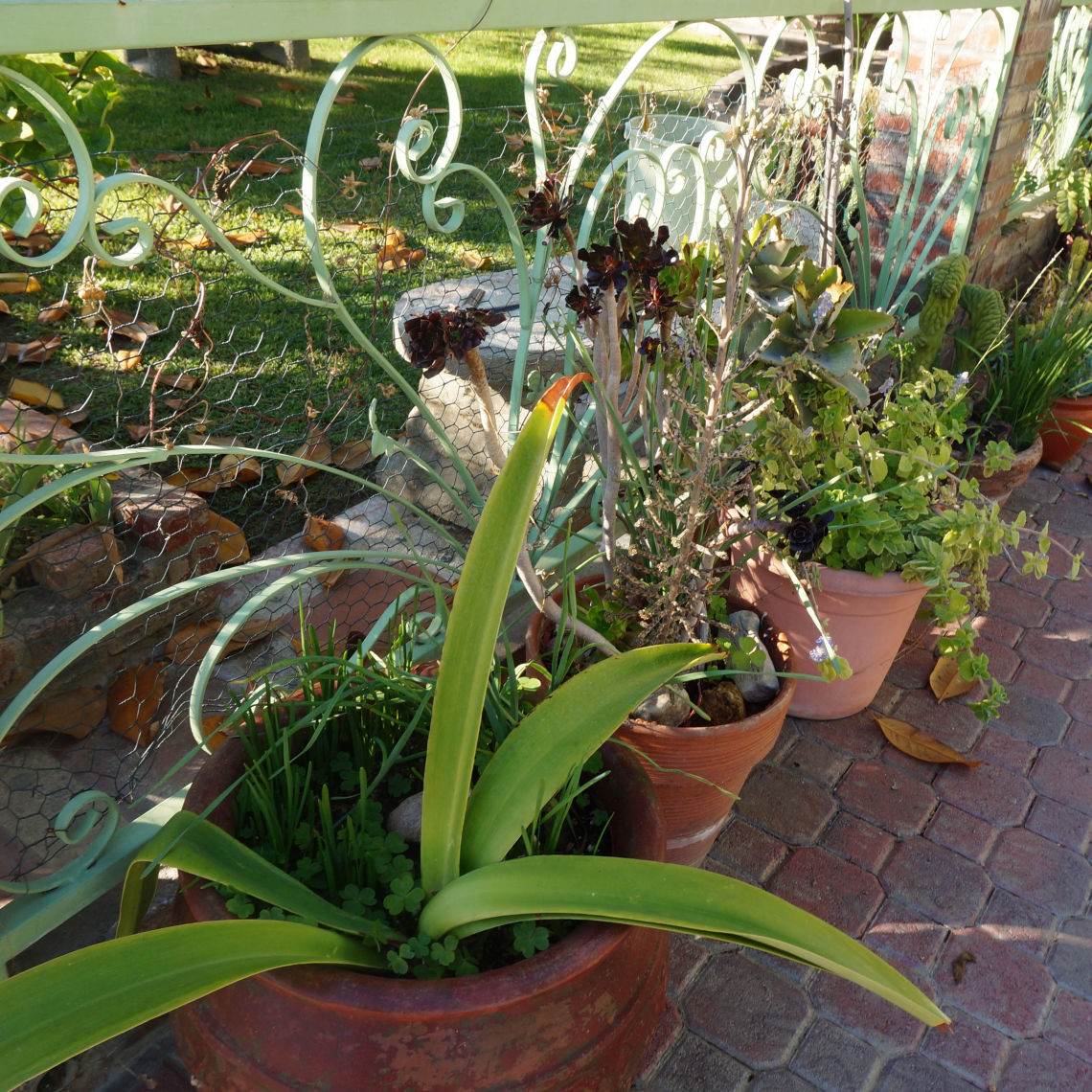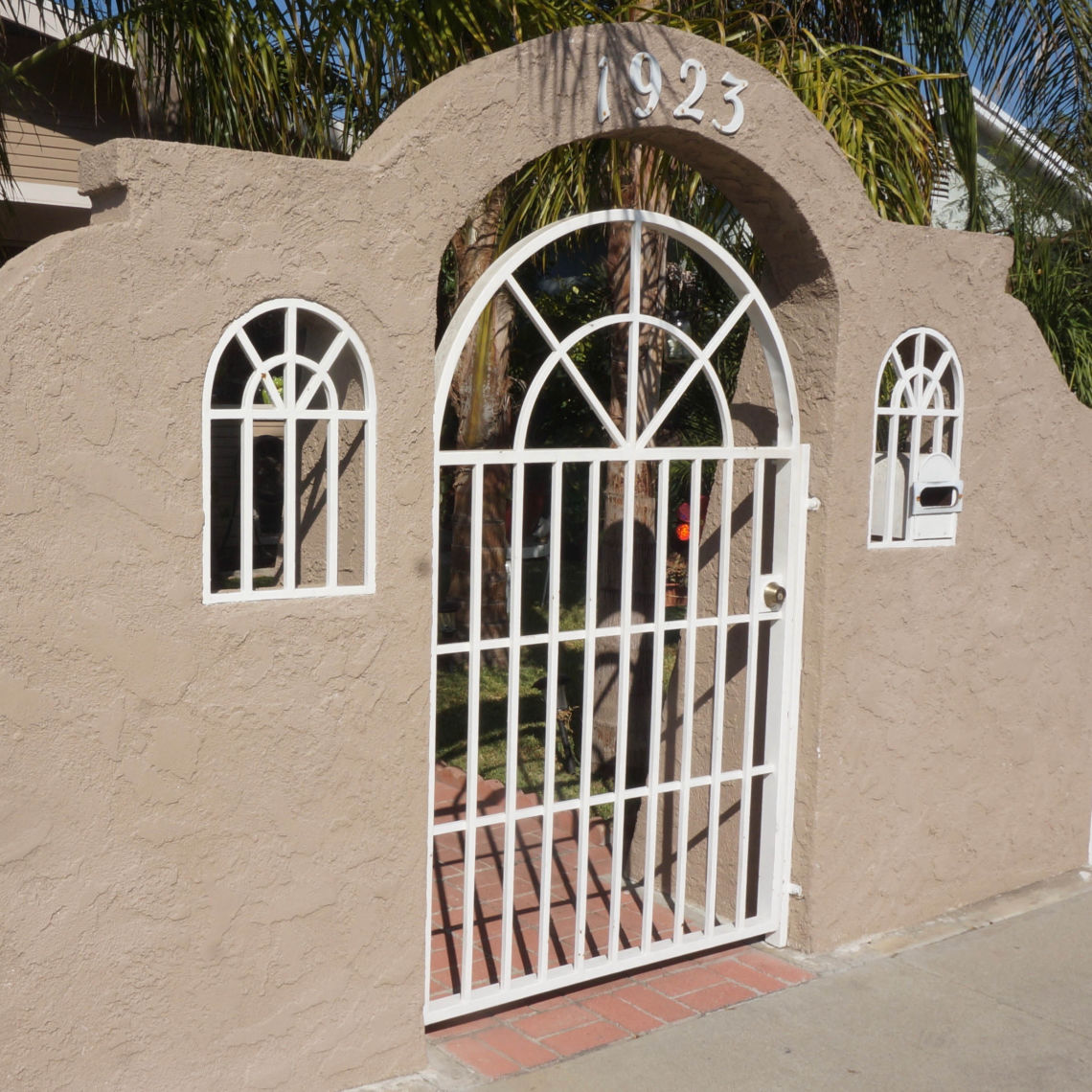How Abuela’s Landscape Will Shape the Next American City
Urban Planner James Rojas on What Makes Places Meaningful
abuelita menu strip copy
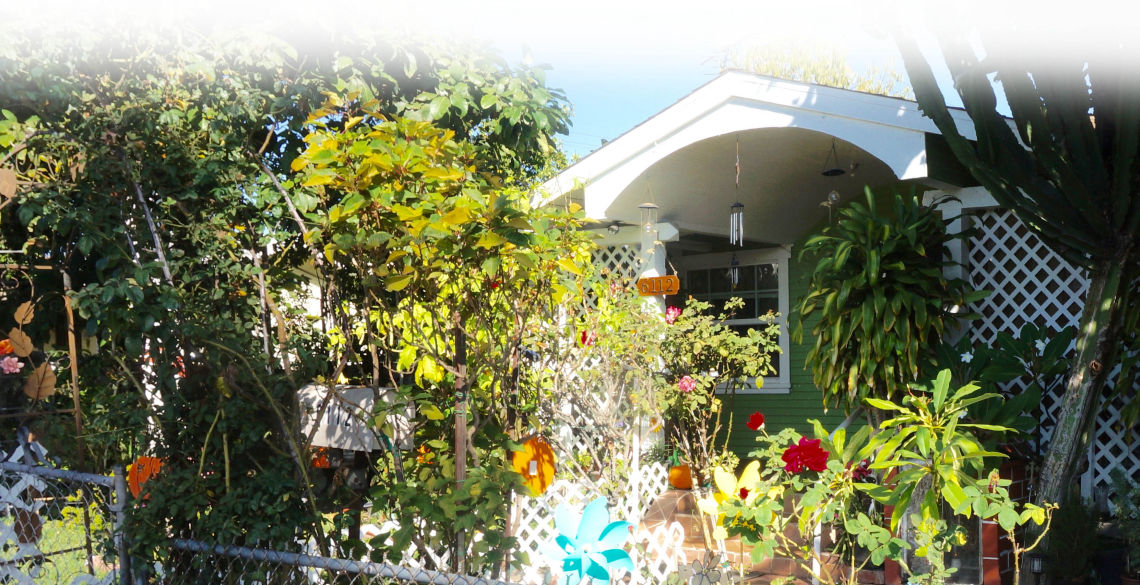
Crawling between the plants in my Abuela’s garden was always full of surprises because I never knew what I would find; a beautiful flower, a broken ceramic Santo (saint), or an edible delight. Like many Latino children my grandmother’s house was my second home because she took care of me while my parents went to work. While the interior of her house offered very little comfort, beside a fresh bowl of beans, her garden piqued my interest as child. Through her stories of fairies, I retreated from the world and found a safe haven to be myself in her lush, magical garden. My eyes glazed at the fuchsias that hung similar to ear rings, and my tiny fingers dug into the dirt. I pretended the long stems of grass formed a skyline or the pedals of the pink hibiscus were the dress of a dancing girl.
These early visual, spatial, and sensual experiences from her garden piqued my desire for landscape and to study urban planning. Through my graduate research at MIT: The Enacted Environment of East Los Angeles, I was able to revisit and examine Latina front yards as a critical place where nature, family, and community grow hand in hand.
Latinas use their imagination, resources, and hands, to retrofit their yards to create a space for their family’s social, cultural, and even economic needs. Unlike the conventional American front yard in which order, perfection, and a display of values are the ideal, the beauty of these rasquache, gardens can’t be measured by design or architectural standards, but rather by life’s experiences, struggles, adaptations and the cultural production of space.
Abuela’s landscape shapes the urban design of the Latino community. Many Latinas, like my grandmother, come from Latin America, where social and cultural life centers on walking, or around the plaza. The plaza was an extension of home life. The dialogue between home and plaza —which is very apparent in the physical structures of Latin American settlements — manifests itself in the way Latinas redesign their American front yards.
Therefore, the Latina front yard plays a major role in the everyday resiliency of family life and is a social conduit between family and the neighborhood.
Many of these front yards are shielded behind a front yard fence. These fences create a mini-street wall that scales down the urban environment from the automobile to the pedestrian. The front-yard fence creates an edge where residents and pedestrians can congregate.
Front yard fences also set the stage for Latinas to transform their front yard into an extension of the home for public view. In most front yards, domestic life is a private affair confined within the walls of house or to the backyard; in Latino neighborhoods it becomes part of the public visual landscape.
Digging deep into memories of place and belonging allows for even the less vocal to have voice in the planning process.
Through the stories generated by Latino community members focusing on Abuela’s landscapes, we understand how these women shape the landscapes. We learn how to reflect the values most important to us, and to nurture the communities that come after us.
For many Latinas, the front yard becomes a space to express them selves through landscape design. Many of these yards host different designs and activities, however plants are essential. Some plants are native to Meso-America and may represent where the gardener comes from. The plants can be decorative, like king or queen palms, or edible, like nopales, citrus, or medicinal herbs. Or they can be seasonal. Día de los Muertos and the Christmas traditions are accompanied by plants like cempaspuchitl (marigold) and nochebuena (pointsettia).
Most often the landscape centers on large trees like avocado, citrus, mango, and others forming the tree canopy or shade structure. Bushes create the second layer or wall to the enclosed front yard. Finally, potted plants create an intimate scale.
These plants enhance the architectural forms inherited from the Spanish Law of the Indies, such as fountains, arches, pots, and plazas.
Using household objects such as tables and chairs adds a second layer of architecture to their front yard. These objects help Latinas use outdoor space in spontaneous ways by giving them flexibility and freedom over their environment.
During the holiday season, household and yard shrines are decorated and nativity mangers are built in living rooms, dining rooms, front porches and yards. The Virgin de Guadalupe shrines are one of the most recognizable landmarks in the Latino front yards, as well as altars for Día de los Muertos and other santos. Religion transforms front yard into sacred space.
Many of the elaborate front yard gardens, shrines and nativity scenes in Latino neighborhoods are created and maintained by women, who play a pivotal role in cultural preservation through their interventions.
The garden design of Rosa Maria Carlos’ front yard in Montebello tells the story of her life. Some of her objects in her garden come from her childhood, such as the bricks from the Simons brickyard. Others she has collected over the years from raising her family, traveling, or as gifts.
Currently, I engage and empower Latino communities across the country through a critical examination of their landscapes. Place IT! uses the participant’s memory, needs, and aspirations of landscapes as the basis for urban planning. I begin the workshops by asking Latinos to “Build your favorite childhood memory” in 10 minutes using small objects.
Most often, Latino participants describe memories that occurred in Abuela’s garden. Common themes that emerge are: nature, physical activity, sharing, family, love, curiosity, imagination, and patterns (like seasons and holidays). These memories represent different experiences such as:
+ Social activities with family and friends
+ Nurturing and caring for the environment + Cultural preservation
“For me, Grandma Lola’s room was that magical place. I could go into her bedroom and lie on her bed while she sat on her chair and crocheted. I could talk to her about so many things. Or, I could lie there in silence and enjoy the peace. When Grandma Lola came to live with my family for a short while, my home went from a chaotic, insecure place to a tranquil and peaceful place. Grandma Lola was my safe place.“ Becky Ramos Velasquez
For many young Latino families struggling with the ever day economic burdens and stresses, their children can find a peaceful space within their grandmother’s landscape.
“Every year for Christmas, our extended family would meet at my grandmother’s house. Even though it was crowded, I got to play with all my cousins.”
Grandmother’s house is usually the social center of tightly knit, multi-generational, Mexican-American micro-communities. The Latino holiday season is steeped in family traditions and socializing. From making tamales to gift exchanges, this season begins on December 12, the feast day of Our Lady of Guadalupe, and lasts until January 6th the Epiphany. At an early age, Latino children learn they are part of larger community of extended family. By interacting with others who are not their age, they become empathetic and learn the value of relationship building .
Abuela landscapes are enduring places located across the Americas and can range from a remote farm in Mexico to a front yard in Santa Ana, California. Latinos often speak with conviction and describe their grandmothers' spaces as nurturing, safe, and even magical. This is the level of reflection we need as we look forward toward developing resilient and water-wise communities.
Digging deep into memories of place and belonging allows for everyone – even the less vocal – to have voice in the planning process. Through the stories generated by Latino community members focusing on Abuela’s landscapes, we understand how these women shape the landscapes. We learn how to reflect the values most important to us, and to nurture the communities that come after us.
The Gateway Cities is made up of homes, buildings, structures, sidewalks, landscapes. These building blocks of landscapes can encompass personal experience, and collective memory and narratives. Latino urbanism teaches us to examine the enduring places that help shape our contemporary cities. For a multi-generational community, it begins with the spaces, relationships, and stories we inherit from our elders. In our work as river advocates we want to not only work toward the health of our watersheds, but also uncover these less tangible, but no-less-integral elements of the community that transform mere infrastructure into place.
rojas play crop
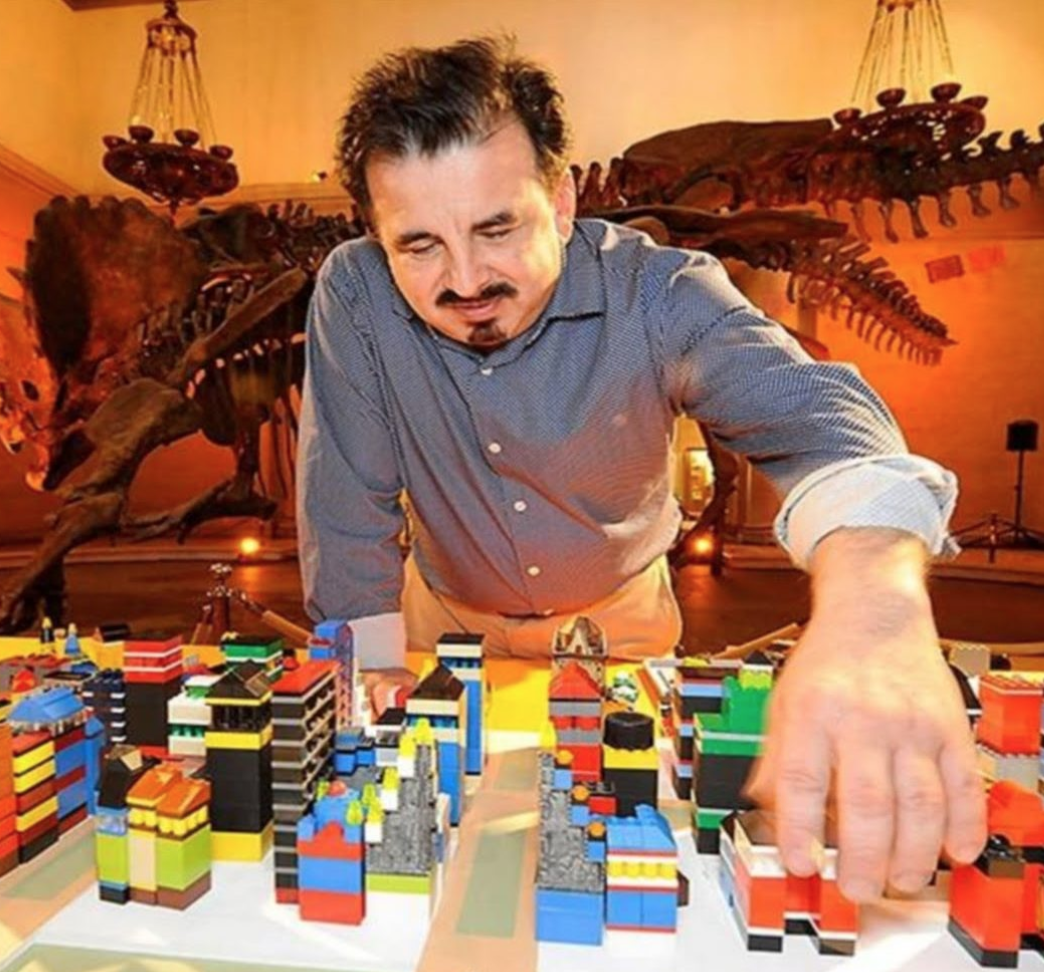
About James Rojas
James Rojas is an urban planner, community activist, and artist. He has developed an innovative public-engagement and community-visioning method that uses art-making as its medium. Through this method he has engaged thousands of people by facilitating over four hundred workshops and building over fifty interactive models around the world - from the streets of New York and San Francisco, to Mexico, Canada, Europe, and South America. He has collaborated with municipalities, non-profits, community groups, educational institutions, and museums, to engage, educate, and empower the public on transportation, housing, open space, and health issues.
Rojas is also one of the few nationally recognized urban planners to examine U.S. Latino cultural influences on urban design and sustainability. He has written and lectured extensively on how culture and immigration are transforming the American front yard and landscape. He is the founder of the Latino Urban Forum, an advocacy group dedicated to increasing awareness around planning and design issues facing low-income Latinos.
Made with ❤️ by TreeStack.io

